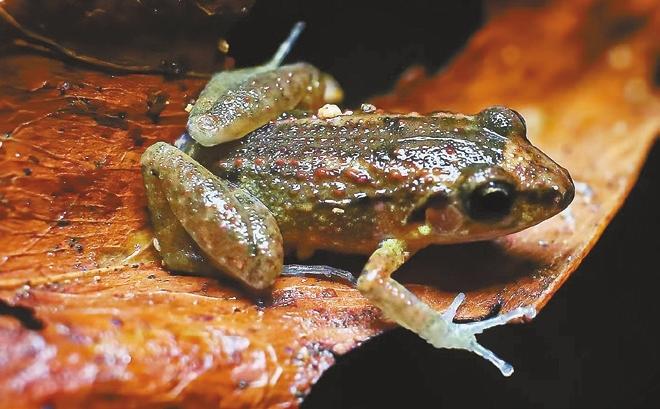
THE greenhouse frog (Eleutherodactylus planirostris) is a small frog native to the Caribbean but has found its way to many parts of the world, including our beautiful Shenzhen. This fascinating frog is very tiny, measuring only about 25 millimeters in length. The greenhouse frog’s color is typically brown, reddish-brown, or gray, with dark stripes or spots on its back. The head may be marked with a dark triangle, and the toes are long and thin, tipped with small adhesive pads. The greenhouse frog is a terrestrial species found in various habitats, including gardens, greenhouses, and among leaf litter. The frog is an insectivore, feeding on various small invertebrates, including ants, beetles, and spiders. This amphibian is oviparous, laying eggs rather than giving birth to live young. Females lay several eggs in moist soil or leaf litter, and they will hatch after about 10 days, and the tadpoles develop in the water-filled cavities of plants or other objects. The greenhouse frog is considered an invasive species in many parts of the world, including Southeast China, where it was accidentally introduced along with imported plants from the Americas. Due to its ability to thrive in various habitats and a lack of natural predators in its introduced range, it poses a threat to our local ecosystems. The greenhouse frog is known to compete with native species for resources and may also serve as a vector for disease. In some areas, the greenhouse frog has been found to have a negative impact on populations of native amphibians. Local authorities must monitor its population and take further steps to control its rapid spread in our city. | 
